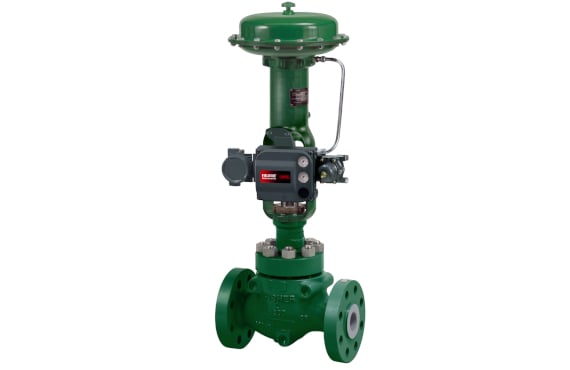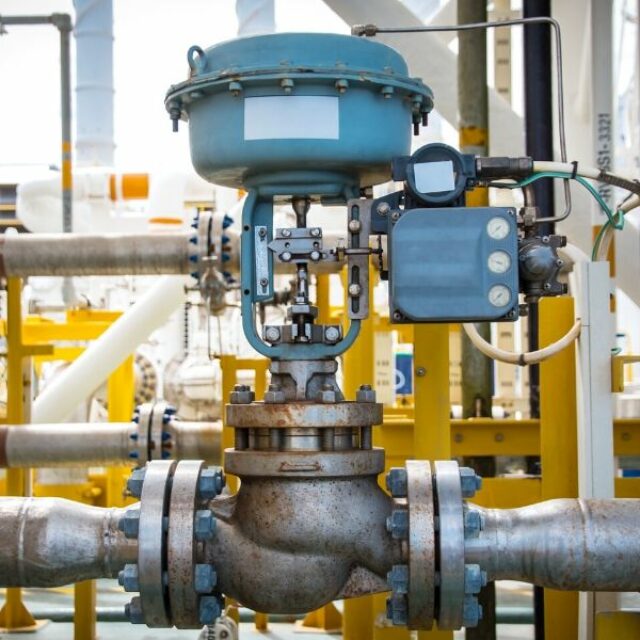Vital Factors to Think About When Picking Control Valves
Vital Factors to Think About When Picking Control Valves
Blog Article

Maximize Power Savings and Comfort With Advanced Building Automation Controls
In the world of contemporary style and center management, the integration of sophisticated building automation regulates stands as an essential innovation. By using the power of automation, structures can adapt, respond, and progress in ways that were once unimaginable.
Power Performance Advantages
Energy performance benefits can dramatically minimize power usage and operational prices in buildings. By implementing energy-efficient methods and modern technologies, structure proprietors and drivers can attain significant financial savings while additionally contributing to ecological sustainability. One of the key advantages of enhancing power effectiveness in buildings is the decrease of utility bills. Energy-efficient systems, such as innovative building automation controls, can maximize using resources like cooling, heating, and lighting, resulting in reduced energy expenditures gradually.
In addition, enhanced energy efficiency can lengthen the life-span of structure devices and systems. By running much more effectively, heating and cooling systems, lighting fixtures, and other structure parts experience less damage, resulting in reduced upkeep and substitute costs. In addition, energy-efficient buildings often regulate higher residential property values and rental rates, offering long-lasting financial benefits to proprietors.
Moreover, power effectiveness can improve resident comfort and efficiency. Appropriately controlled interior settings with ideal lights and thermal problems develop an even more enjoyable and helpful workspace, leading to boosted employee fulfillment and efficiency. Generally, the energy efficiency advantages related to sophisticated structure automation controls are complex, encompassing price financial savings, ecological stewardship, and occupant well-being.
Boosted Convenience Control
Enhancing comfort control in structure settings requires an advanced integration of innovative automation systems for optimum owner wellness. By using innovative structure automation controls, facilities can customize the interior atmosphere to meet the certain requirements and choices of occupants. control valves.
Improved convenience control exceeds fundamental temperature level adjustments. It includes attributes such as personalized setups, occupancy sensing units, and natural light use to develop a dynamic and responsive atmosphere. By incorporating these innovative controls, structures can not only improve comfort but likewise enhance energy performance by enhancing system procedures based on real tenancy and use patterns. Eventually, prioritizing resident comfort with advanced automation systems brings about a more satisfying and healthier interior setting.
Functional Performance Improvements

Additionally, the implementation of real-time surveillance and analytics tools allows structure operators to identify energy ineffectiveness and operational anomalies promptly. By continually checking energy usage patterns and system efficiency metrics, modifications can be made in real-time to maximize power consumption and make sure peak functional performance. control valves. Additionally, integrating demand response strategies right into structure automation controls can further boost operational performance by dynamically adjusting power usage based on grid problems and rates signals
Indoor Environment Optimization
Reliable indoor environment optimization is a basic aspect of building automation controls, making certain owners' convenience and health while maximizing energy cost savings. By making use of advanced sensors and controls, constructing automation systems can continuously keep track of and adjust temperature level, moisture levels, air quality, and air flow to develop an ideal interior atmosphere. Keeping comfortable and consistent conditions not just improves passenger fulfillment but likewise enhances productivity and total well-being.
Interior environment optimization additionally plays an essential function in power effectiveness. By fine-tuning home heating, get more air flow, and cooling systems based upon real-time information and tenancy patterns, developing automation controls can significantly lower power usage - control valves. Applying techniques such as demand-controlled air flow and thermal zoning can assist reduce power waste while ensuring that each area of the building obtains the needed conditioning.

Sustainable Environment Production
Building automation regulates not just optimize indoor environment conditions for energy efficiency and passenger comfort however likewise lay the structure for creating a sustainable environment via tactical Home Page administration of sources and systems. By integrating innovative building automation modern technologies, such as sensors, actuators, and intelligent software, facilities can check and readjust energy use in real-time to decrease waste and lower their carbon footprint. These systems allow anticipating upkeep, recognizing potential issues prior to they rise and optimizing tools efficiency to improve longevity and performance.
Furthermore, sustainable environment creation extends past energy monitoring to include water conservation, waste reduction, and indoor air quality enhancement. Building automation controls can manage water use, discover leaks, and make certain correct garbage disposal techniques, adding to overall sustainability initiatives. Furthermore, by managing and keeping track of air flow and filtration systems, these innovations improve passenger wellness and productivity while lowering energy usage linked with HVAC procedures.
Conclusion
Finally, advanced building automation manages offer significant advantages in regards to power financial savings, convenience control, operational effectiveness, indoor environment optimization, and producing a sustainable environment. By executing these controls, buildings can achieve optimal performance while decreasing power usage and improving resident comfort. It appears that using advanced automation innovation is important in boosting building efficiency and creating a more lasting future.
Power efficiency pop over here advantages can considerably decrease power intake and operational costs in structures. On the whole, the power efficiency benefits linked with innovative structure automation controls are complex, including expense financial savings, ecological stewardship, and owner health.
Furthermore, incorporating demand feedback techniques right into building automation controls can better boost operational efficiency by dynamically changing power usage based on grid problems and rates signals.
Building automation regulates not only enhance interior environment conditions for energy efficiency and occupant convenience but likewise lay the foundation for developing a lasting atmosphere via calculated management of resources and systems.In final thought, advanced building automation regulates offer considerable benefits in terms of power savings, convenience control, operational performance, indoor climate optimization, and developing a lasting environment.
Report this page